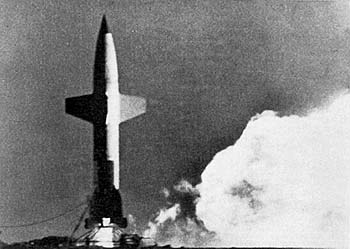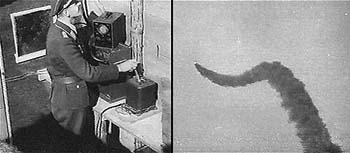
The 'Aerial Target' and 'Aerial Torpedo' in GermanyEMW (Electro Mechanische Werke)  EMW (Electro Mechanische Werke) Wasserfall Surface-to-Air Missile citation tba
EMW (Electro Mechanische Werke) Wasserfall Surface-to-Air Missile http://home.inreach.com/rickylaw/dictatorship/wonder/missile/wasserfall/wasserfall.html Wasserfall was a German radio-controlled supersonic guided missile for anti-aircraft purpose. It was designed to meet a demand for a missile that would intercept hostile aircraft flying at 19,812m (65,000ft) altitude at 880km/h (550mph) and at ranges up to 48km (30 miles) from the launch site. This specification was highly advanced for the 1940s and was not achieved by any major combat aircraft in the war. The intention was to position batteries of these missiles to defend population centers, and about 200 batteries would be needed to cover Germany. Work and research were started at the Peenemünde Research Station in 1942, and the design borrowed many concepts from the A-4 missile. The first launching tests took place across the Baltic in February 1944, and an altitude of 7010m (23,000ft) was reached by the rocket. Seven more prototypes were made and fired by July 1944.
 Wasserfall 'pilot' http://users.visi.net/~djohnson/missile
Research and development were terminated in February 1945. Some sources have suggested that several of the trial missiles were actually deployed against Allied aircraft. However, there is no evidence to support this claim. The missle weighed 3545kg (7,800lb) at takeoff, and contained a 306kg (674lb) warhead of high explosive armed with a proximity fuze. Wasserfall would have been a powerful and fearsome addition to Germany's air defenses if only more were produced on time.
|
© Copyright 1999 CTIE - All Rights Reserved - Caution |